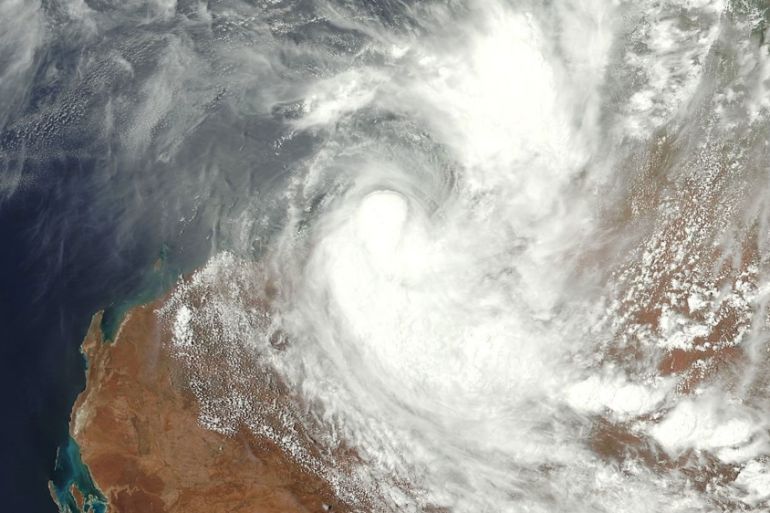Joyce brings joy to Western Australia
Rain from a long-lived tropical cyclone promises a good harvest for Australian farmers.

Tropical Cyclone Joyce made landfall on Eighty Mile Beach in Western Australia nearly a week ago, but it has only just stopped dropping rain. Despite leaving the warm water and making landfall, a condition that would normally cause a tropical cyclone to disintegrate, Joyce maintained her structure into Saturday.
At 15:00 GMT on January 12, the Joint Typhoon Warning Center issued the final warning of Tropical Cyclone Joyce. At that time the storm had winds near 85km/h. More importantly, she was still only about 115km east of Port Hedland, Australia.
Keep reading
list of 4 itemsAfter the Hurricane
World’s coral reefs face global bleaching crisis
Why is Germany maintaining economic ties with China?
Port Hedland radar imagery showed rain bands around a central vortex just east of the station. Joyce was still feeding on the warm waters just off the coast and this has turned into mostly good news.
High rainfall totals were reported in parts of the Kimberley, Inland Pilbara and Southern Gascoyne, 160mm to 260mm was the general range.
Farmers across Western Australia expressed happiness at the unprecedented rainfall across the usually dry landscape.
Pastoralist David Smith said the sight of the flooded plains from his plane had been a welcome sight.
“So all the rivers around this area are running quite good streams,” he said, explaining that the rainfall had been widespread enough to see the Gascoyne River flood again for the first time since 2015.
Ajana farmer Bob Porter said it was the best rain he had ever seen.
“Rainfall varied from 70mm to about 130mm,” he said “and that 130mm rainfall was the highest recording overnight or daily recording since 1930, when we began recording rainfall here,” he said.
January usually brings little or no rain to Ajana, which lies roughly 530km north of Perth.
Residents of Perth were not quite so happy. The city officially recorded 96mm of rain in 24 hours, making it the wettest January day for 18 years and the second-highest January daily rainfall ever recorded. That total is equal to the average rainfall for the city for December, January, February and March combined.
The tropical nature of the rain has now gone but for the next day or so, showers are still possible in Western Australia.
Additional reporting by phys.org. abc.net and weatherzone.com.au